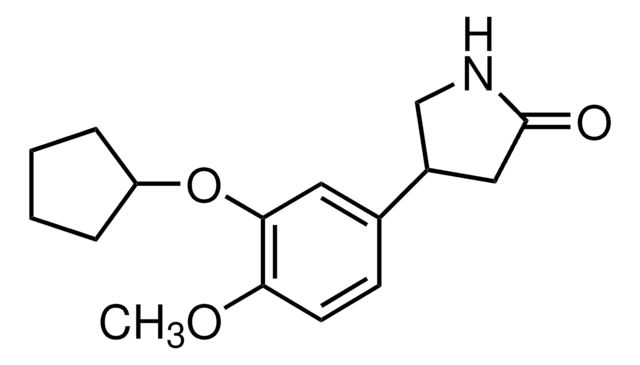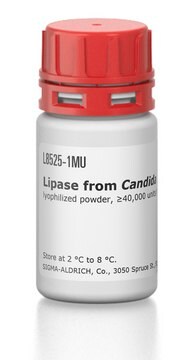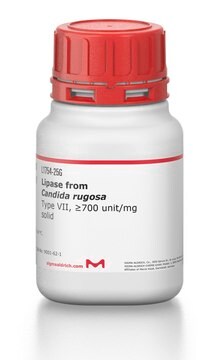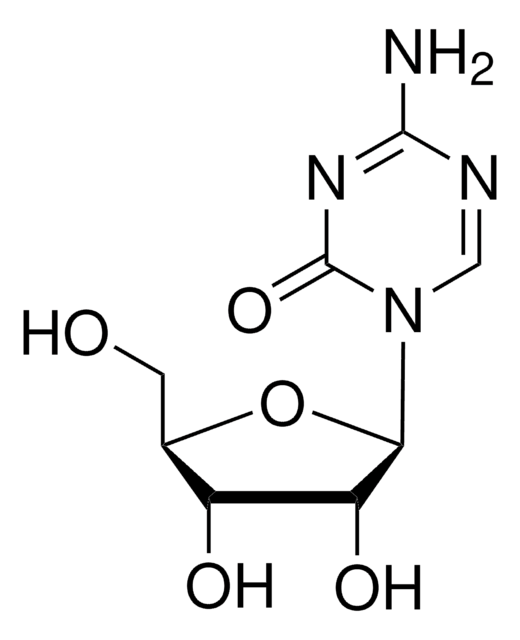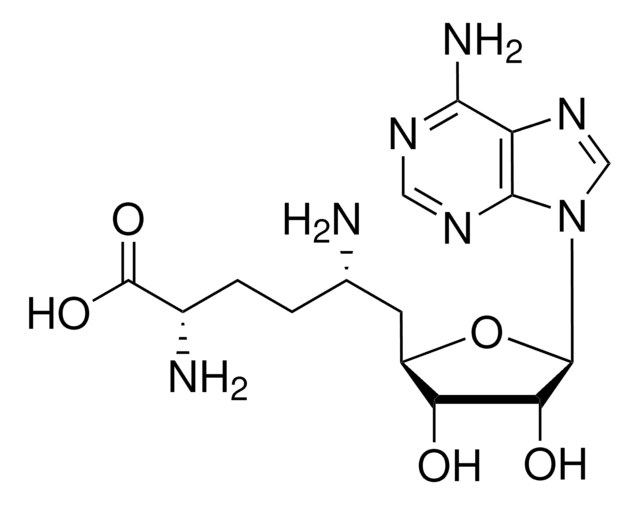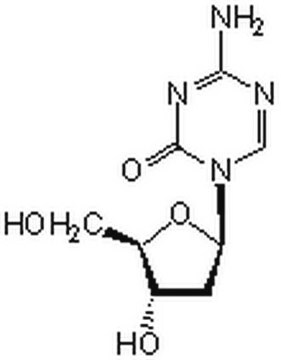R8279
RG108
≥98% (HPLC), powder
Synonym(s):
N-Phthalyl-L-tryptophan
About This Item
Recommended Products
Quality Level
Assay
≥98% (HPLC)
form
powder
optical activity
[α]/D -250 to -310°, c = 0.5 in methanol
color
yellow
solubility
DMSO: >10 mg/mL
storage temp.
−20°C
SMILES string
OC(=O)[C@H](Cc1c[nH]c2ccccc12)N3C(=O)C4=CCCC=C4C3=O
InChI
1S/C19H16N2O4/c22-17-13-6-1-2-7-14(13)18(23)21(17)16(19(24)25)9-11-10-20-15-8-4-3-5-12(11)15/h3-8,10,16,20H,1-2,9H2,(H,24,25)/t16-/m0/s1
InChI key
LMAZUAXDZRILNJ-INIZCTEOSA-N
General description
Application
- in reprogramming and increasing cell plasticity of primary multipotent mesenchymal stromal cells (MMSC)
- as an inhibitor of DNA methyltransferase (DNMTi) in human retinal pigment epithelial ARPE-19 cells
- as a DNA methyltransferase inhibitor in C33A2 cells to test its effect on papillomavirus late gene expression (HPV16)
Biochem/physiol Actions
Features and Benefits
Storage Class Code
11 - Combustible Solids
WGK
WGK 3
Flash Point(F)
Not applicable
Flash Point(C)
Not applicable
Certificates of Analysis (COA)
Search for Certificates of Analysis (COA) by entering the products Lot/Batch Number. Lot and Batch Numbers can be found on a product’s label following the words ‘Lot’ or ‘Batch’.
Already Own This Product?
Find documentation for the products that you have recently purchased in the Document Library.
Customers Also Viewed
Our team of scientists has experience in all areas of research including Life Science, Material Science, Chemical Synthesis, Chromatography, Analytical and many others.
Contact Technical Service


